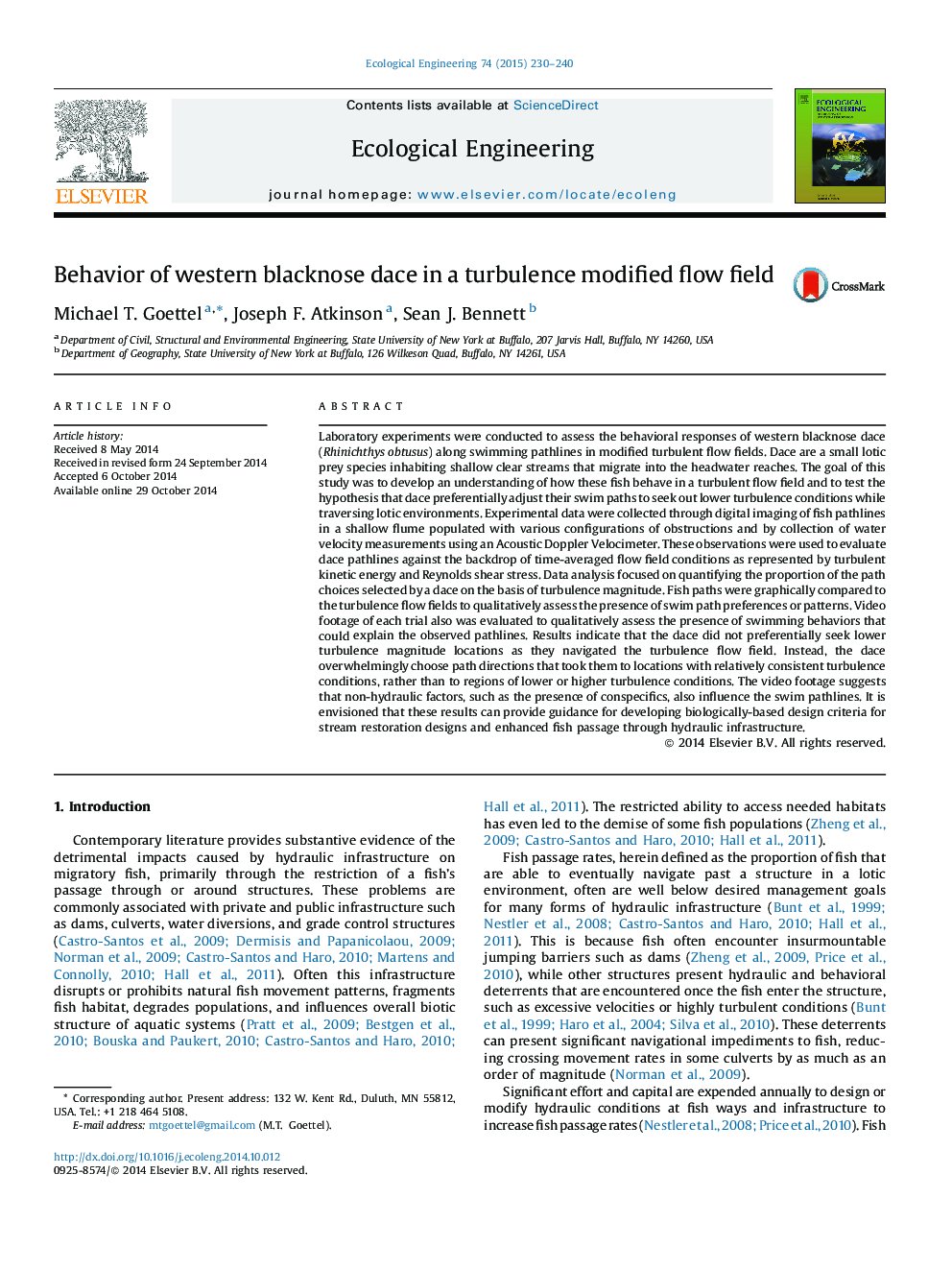| Article ID | Journal | Published Year | Pages | File Type |
|---|---|---|---|---|
| 4389312 | Ecological Engineering | 2015 | 11 Pages |
•Research suggests that turbulence can impact fish swimming capabilities and habitat selection.•Blacknose dace swim paths were observed in a turbulence modified flow field to identify responses.•Turbulence was represented by metrics of turbulent kinetic energy and Reynolds shear stress.•Results indicate fish most often chose to swim toward conditions of similar (magnitude) turbulence.•Qualitative observations suggest non-hydraulic factors can also influence fish pathway selections.
Laboratory experiments were conducted to assess the behavioral responses of western blacknose dace (Rhinichthysobtusus) along swimming pathlines in modified turbulent flow fields. Dace are a small lotic prey species inhabiting shallow clear streams that migrate into the headwater reaches. The goal of this study was to develop an understanding of how these fish behave in a turbulent flow field and to test the hypothesis that dace preferentially adjust their swim paths to seek out lower turbulence conditions while traversing lotic environments. Experimental data were collected through digital imaging of fish pathlines in a shallow flume populated with various configurations of obstructions and by collection of water velocity measurements using an Acoustic Doppler Velocimeter. These observations were used to evaluate dace pathlines against the backdrop of time-averaged flow field conditions as represented by turbulent kinetic energy and Reynolds shear stress. Data analysis focused on quantifying the proportion of the path choices selected by a dace on the basis of turbulence magnitude. Fish paths were graphically compared to the turbulence flow fields to qualitatively assess the presence of swim path preferences or patterns. Video footage of each trial also was evaluated to qualitatively assess the presence of swimming behaviors that could explain the observed pathlines. Results indicate that the dace did not preferentially seek lower turbulence magnitude locations as they navigated the turbulence flow field. Instead, the dace overwhelmingly choose path directions that took them to locations with relatively consistent turbulence conditions, rather than to regions of lower or higher turbulence conditions. The video footage suggests that non-hydraulic factors, such as the presence of conspecifics, also influence the swim pathlines. It is envisioned that these results can provide guidance for developing biologically-based design criteria for stream restoration designs and enhanced fish passage through hydraulic infrastructure.
